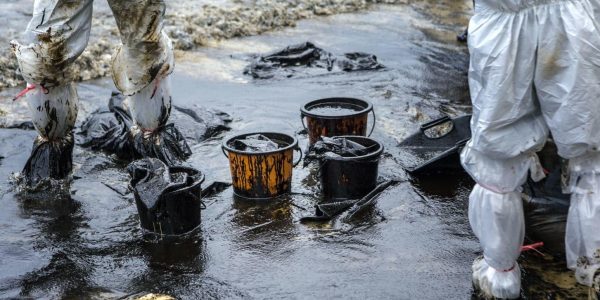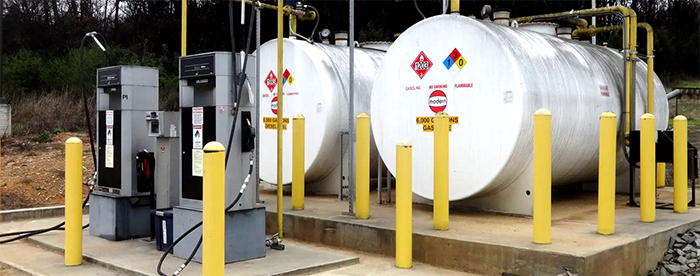Aboveground Petroleum Storage Tank Program
Program Overview
The Ventura County Environmental Health Division regulates facilities subject to the Aboveground Petroleum Storage Act (APSA) within the County of Ventura, with the exception of the City of Oxnard and the City of Ventura.
The goal of the APSA program is to protect public health and the environment from potential contamination or adverse effects associated with unintentional releases from the aboveground storage of petroleum-based hazardous materials and wastes.
APSA regulates the following facilities
- Tank facilities that are subject to the federal Spill Prevention, Control, and Countermeasure (SPCC) Rule
- Tank facilities with an aggregate storage capacity of 1,320 gallons or more of petroleum in aboveground storage containers
- Tanks with a shell capacity equal to or greater than 55 gallons.
- Tank facilities with less than 1,320 gallons of petroleum if they have one or more stationary tanks in an underground area (TIUGA) with a shell capacity of 55 gallons or more of petroleum.
APSA defines “petroleum” as crude oil, or any fraction thereof, which is liquid at 60 degrees Fahrenheit and 14.7 pounds per square inch absolute pressure. APSA does not regulate non-petroleum products.
Laws and Regulations
Spill Prevention Control and Countermeasure Plan (SPCC Plan)
Tier I Qualified Facilities are facilities with a total aggregate aboveground storage capacity of 1,320 gallons and up to 10,000 gallons with no single container greater than 5,000 gallons. No single discharge to navigable waters or adjacent shorelines exceeding 1,000 gallons or no two discharges, each exceeding 42 gallons, within any 12-month period in the three years prior to the SPCC certification. These facilities are required to prepare a Tier I SPCC plan and may self-certify.
Tier II Qualified Facilities are facilities with a total aggregate aboveground storage capacity of 1,320 gallons and up to 10,000 gallons with a single container greater than 5,000 gallons. No single discharge to navigable waters or adjacent shorelines exceeding 1,000 gallons or no two discharges, each exceeding 42 gallons, within any 12-month period in the three years prior to the SPCC certification date. These facilities are required to prepare a Tier I SPCC plan and may self-certify.
Non-qualified are facilities with a total aggregate aboveground storage capacity more than 10,000 gallons. These facilities are required to prepare a complete SPCC plan with PE Certification.
Conditionally Exempt farms, nurseries, logging sites, or construction sites are exempt from the requirements to prepare an SPCC Plan provided that the facilities aggregate capacity does not exceed 100,000 gallons, no single tank with a capacity larger than 20,000 gallons, conducts “daily” inspections, allows the CUPA to conduct periodic inspections, and installs secondary containment if requested to do so by the CUPA.
* Daily means every day that contents are added to or withdrawn from the tank, but no less than five days per week.
CERS
Guidance Documents
Links
Contact Us
Matthew Madison
Supervisor
Matthew.Madison@ventura.org
(805) 662-6511
Kassandra Carrillo
Technical Lead
Kassandra.Carrillo@ventura.org
805-662-6511
Other Regulatory Contacts
City of Oxnard CUPA
cupa@oxnard.org
(805) 385-7722
City of Ventura PA
Brett Reed
Breed@cityofventura.ca.gov
(805) 320-8337



